Top Image: View of the Memorial at Futa Pass, November 14, 2019.
Who wants to be among the last men killed in a war? Who freely chooses to have their name added to the list of final deaths in a conflict? These questions, which I have come back to again and again in my study of World War II, flashed through my mind with particular severity as I walked the rows of grave markers for German war dead at Futa Pass in November 2019.
Ideally, cemeteries should impart comfort to visitors. The chain of phrases linked to “cemetery”—some of the most vivid are “final resting place” and “eternal peace”—evoke sleep and the end of anguish and turmoil. In the German language, Friedhof (“cemetery”) translates directly as “Court of Peace.” Graveyards, however, can also summon far darker sentiments. Often they instill fright and unease. At Futa Pass, I experienced a strange fusion of these two seemingly opposed emotions.
Many Americans have toured Arlington National Cemetery or the National Memorial Cemetery of the Pacific at Punchbowl Crater in Honolulu. Both are extraordinarily beautiful and communicate the reverence and gratitude of the nation for sacrifice. Those more fortunate, like myself, who have traveled to Normandy and seen the American Cemetery and Memorial at Colleville-sur-Mer, where 9,385 US service members killed during World War II are interred, can speak to how powerful a place it is. Trips to burial sites in the former Axis Powers are a much rarer occurrence, though, and when they happen they can raise more than a few eyebrows. Why would one want to visit a location where thousands of men in uniform who fought for Hitler, Mussolini, or Hirohito are buried?
In my case, the visit to the German cemetery at Futa Pass, in gorgeous Tuscany, in north-central Italy, came about because of the Hintz and Wronka families, two families that have become a special part of my life since 2018. After connecting in the spring of 2018 with Hans Wronka, the grandson of 1st Lieutenant Loren Hintz, a P-47 pilot shot down and killed near Bologna, Italy, on April 21, 1945, I wrote about the search and eventual recovery of Loren’s remains and much of his aircraft in July 2016. In the process, I became close to Hans and his mother, Gretchen Hintz Wronka, one of Loren’s two children. A regular and lively correspondence with Gretchen struck up immediately. When she and Hans invited, or rather insisted, that I attend the service for the interment of Loren’s remains at the American Cemetery and Memorial in Florence, Italy, planned for November 2019, I felt honored beyond belief. Thanks to support from the Museum, I joined them, their families, and the family of Martin Hintz, Loren’s son, for a week of commemoration up to and including the service at the cemetery.
One is grateful to be alive for such events. Travel with the Hintz and Wronka families entailed finding locales tied to 1st Lt. Hintz’s time in Italy. Describing our trips in Emilia-Romagna and Tuscany could easily fill a book—and maybe it will one day. But it was Gretchen who pushed for a visit to Futa Pass, a location affixed to the “other side” during the Second World War. Our bus arrived there on November 14, a very crisp Thursday. Back home, Veterans Day had been celebrated three days earlier.
I will never forget that day. Futa Pass is high up in the Apennine Mountains and the sky was a deep blue. Clouds hovered just above the mountain tops. In every direction I looked, spectacular vistas loomed. It was a spot where you just wished to sit down, suspend the chatter in your head, and absorb. Beauty like that, once imbibed, seeks forms of reexternalization. Poetry and song, painting and photography, journal and memoir--all reintroduce such communion back outside oneself.
Futa Pass is, of course, not a destination for meditation or the production of art. It is a place linked forever to war and violent death under forbidding conditions. Maintained by the Volksbund Deutsche Kriegsgräberfürsorge (German War Graves Commission), the site is the final resting place for 30,683 soldiers and support personnel from the German army in northern Italy. Yes, 30,683. Three-and-a-half times the number of Americans buried at Colleville-sur-Mer. As part of the Gothic Line, the Wehrmacht’s line of defense in 1944-45, Futa Pass was a site of ferocious combat in April 1945, as the Third Reich’s military presence in Italy, like everywhere else, disintegrated. Later, it became the place of interment for Germany’s war dead in the region.
When we stepped off the bus at Futa Pass, Gretchen prepared us with some extremely thoughtful words, which I paraphrase. The Germans entombed here, I remember her imploring, were human beings, too. We should try to understand them as individuals who left behind family. Who left behind children, like Martin and herself, children who had to grow up without a father. However, Gretchen said nothing resembling the vile slogan, “to understand all is to forgive all.”
As I wandered among the rows of grave markers, I attempted, with limited success, to tune out the astonishingly rich surroundings. To think and to learn as much as I could about the men under the earth in that cemetery became my task. I was impressed by the quality of the work done by the German War Graves Commission. The place projects solemnity and respect for the slain but not adoration. Due to the brilliance of architect Dieter Oesterlen, the memorial and landscaping, with their sharp, geometric features, seize and hold one’s vision.
For much of my perambulation around Futa Pass, Martin Hintz accompanied me. Though I knew his story from his sister, Gretchen, and, nephew, Hans, I had only met him a few days before. Since Martin had lived in New Orleans and loved the food, music, and spirit of the city, we instantly connected. He and his wife Pam were so warm and appreciative of the article I had written about Loren. During the week of commemoration, he gathered material and interviews for a film he was putting together about his father. Born several weeks after Loren’s death (Gretchen was 15 months old when he was killed), Martin grew up hearing stories about his father. Family photographs and possessions kept by Gertrude Hintz, Martin and Gretchen’s mother, guaranteed that Loren’s short and remarkable life—he was only 27 when he was killed—did not fade from memory. Now Martin and I combed through the grave markers gazing upon the names of men who had been at war with Loren Hintz and the Americans. Perhaps, I wondered, some of these German soldiers might have perished at the hands of Loren’s unit (86th Fighter Squadron, 79th Fighter Group, Twelfth Air Force). Maybe one of them had manned the MG-42 machine gun which brought down Loren’s P-47 Thunderbolt on April 21, 1945.
Mainly, Martin and I searched, sometimes together, at other points with a little distance between us, for matches—for German soldiers whose dates of death lined up with or were close to Loren’s. We did not have to exert ourselves. The evidence of mass death in the last weeks of World War II in Italy was all around us. To note just a few (their full names are omitted out of respect for the privacy of their families), there was a Corporal Horst S., killed on April 15, 1945, and a Sergeant Franz K. on April 19. I saw markers for those who died after Loren: a Lance Corporal Alfred O. on April 23 and a Lance Corporal Friedrich S. who fell on the 24th of April. The ages of the men I came across ranged from 19 to 42. So common, too, was the simple yet awful expression “Unbekannter Deutscher Soldat” (Unknown German Soldier). I saw many of these Unknowns scattered across the rows. Then, I discovered a marker for a Greek man, an Antanas Z., a Kampfhelfer (Auxiliary). I paused. What caused him to fight with and for the Germans? To leave his homeland only to die across the Adriatic here?
Once Martin and I, soon joined by Gretchen, entered the memorial, we gazed at plaques commemorating these men’s units. The 90th Panzergrenadier Division, the 334th Infantry Division, the 114th Jäger Division, and the 96th Panzer Division were some of them listed. A few spoke of comradeship and the memory of the fallen. None, thankfully, spoke of heroism. Whatever courage the Germans in these units mustered, it was not only for a doomed cause, but for a genocidal one. Surely all these men did not adhere to the ultra-reactionary tenets of Nazism. And what did that matter? They did not resist it either. On the contrary, they had journeyed with their units to Italy only to perish days before the German capitulation. On April 29, 1945, Colonel-General Vietinghoff-Scheel, commander of German forces in Italy, ordered his men to surrender to the Allies. These individuals, whose names and death dates I recorded, died so horrendously close to the end of combat. They continued to fight until they were killed so far from their homes. A week or two weeks later, they would have become prisoners of war. And they would have survived.
As Gretchen, Martin, and I left Futa Pass and boarded the bus to head to Impruneta, near Florence, I felt immense gratitude that I had seen this site. Gretchen was right. We must always view the men buried here as human beings. In that spirit, the Wronka family subsequently established contact with Stefan Johann. Stefan’s grandfather, Heinrich Johann, was a 42-year old German soldier killed by Italian partisans near Bologna on the exact same day as Loren’s death. Although Heinrich Johann’s name is among the 30,683 at Futa Pass, Stefan does not believe it is the correct place of burial. Hans and Gretchen are doing what they can to aid Stefan in locating the true location of Heinrich’s remains. Even the worst of wars need not poison relations between the descendants of the slain.
Gretchen’s exhortation does not mean, though, that we flinch from condemning the cause for which they, no matter how enthusiastically, fought and died. A major blow was struck in this region against fascism—German and Italian. Loren Hintz, a farm boy from Iowa, did his part. Loren and millions of other young men from the United States did what the most progressive elements in Italy and Germany had failed to execute in the early 1920s and early 1930s—the task of defeating Mussolini and Hitler. I understood this far better after this amazing trip. And the loss of Martin Hintz--he died from cancer at the far too young age of 75 in September 2020--has driven home how crucial this history is to our present. Veterans Day, November 11, and November 14, the day I laid eyes on Futa Pass, will be bound together for me for the rest of my life.
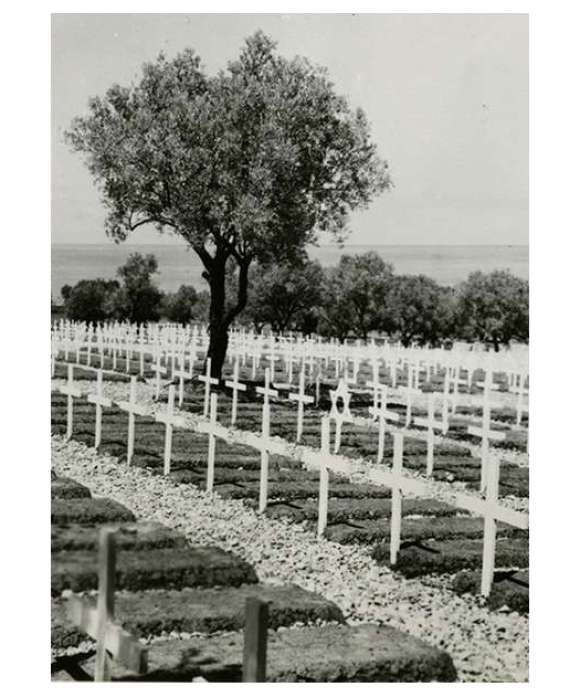
Victory for the Lost: The Ultimate Sacrifice That Made VE-Day Possible
Monuments and fields of white crosses mark the cost of victory in Europe. Majestic today, the cemeteries were in a much different state 75 years ago.
Jason Dawsey, PhD
Jason Dawsey, PhD, is ASU WWII Studies Consultant in the Jenny Craig Institute for the Study of War and Democracy.
Cite this article:
MLA Citation:
APA Citation:
Chicago Style Citation:
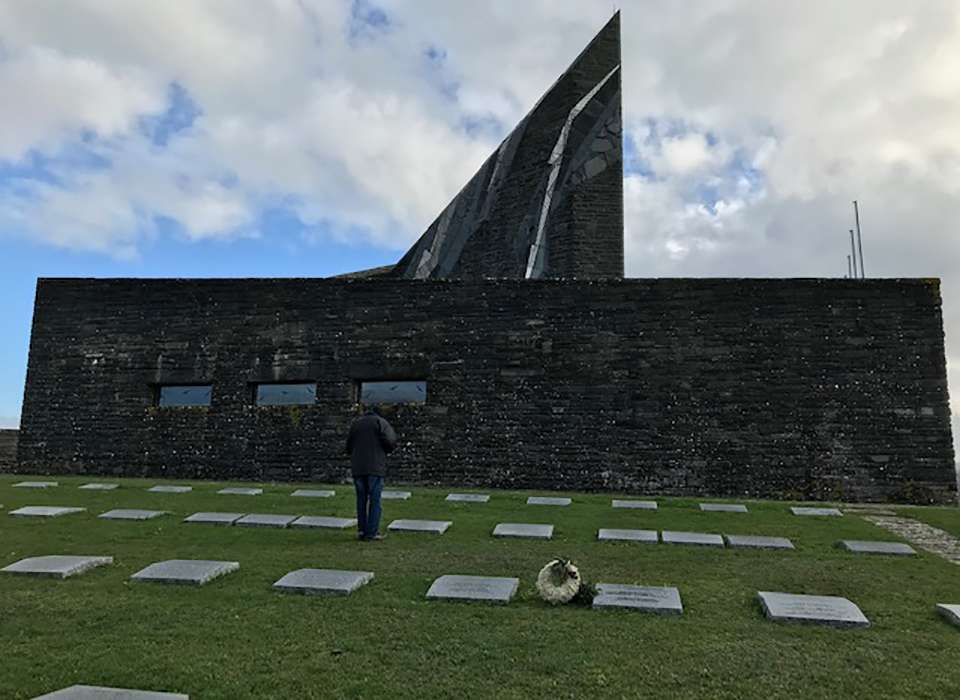
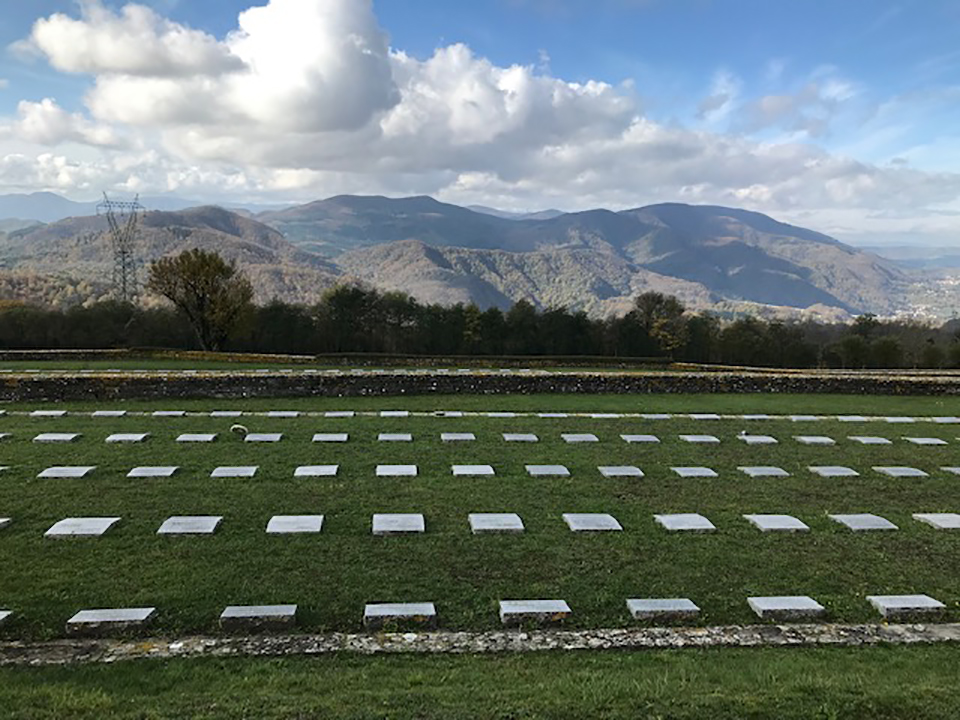
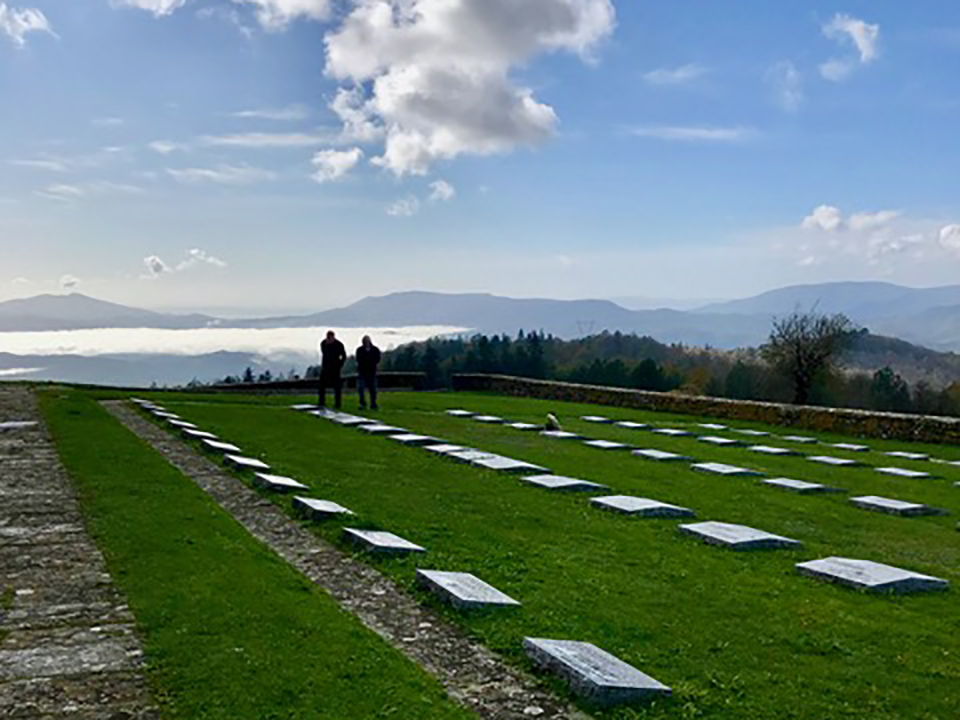
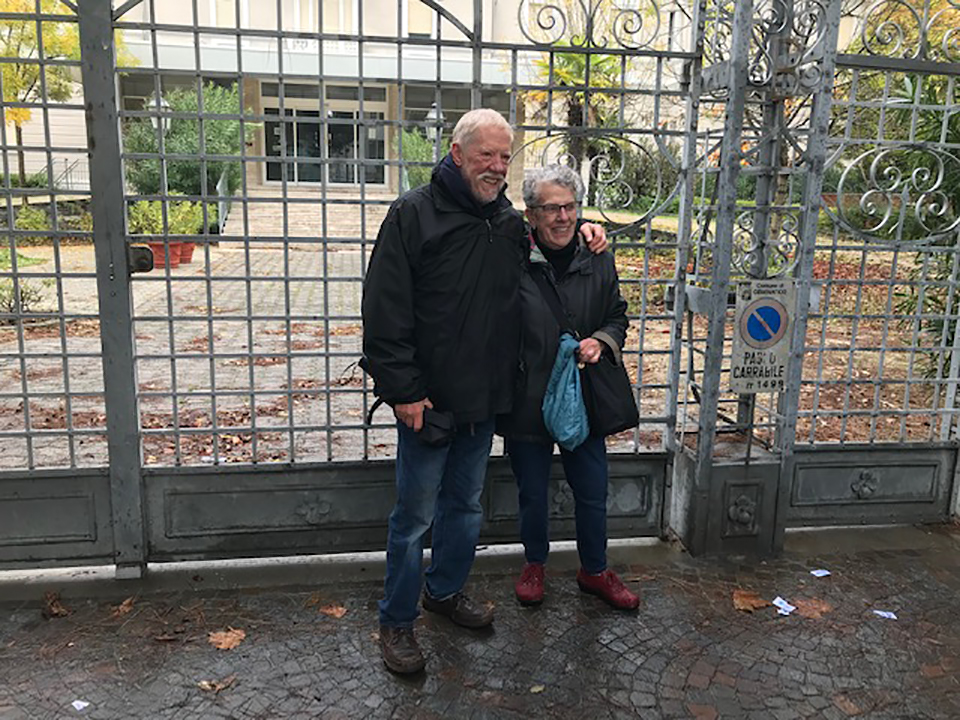




![Max Fuchs, New York City cantor, sings as Rabbi Sydney [sic] Lefkowitz, Richmond, VA, conducts the first Jewish services from Germany.](/sites/default/files/styles/max_650x650/public/2025-10/image1.jpg)



